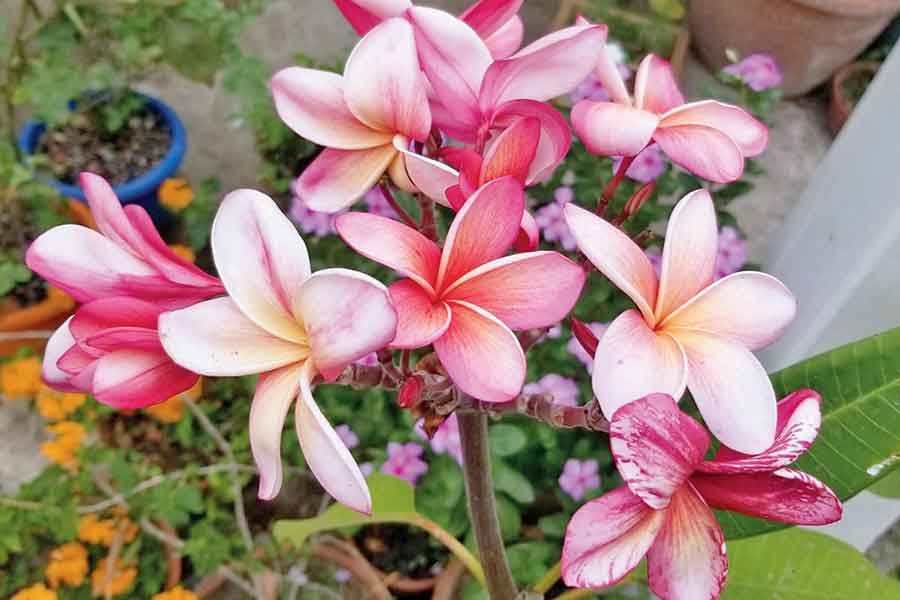Beautiful and fragrant, the Frangipani (Champa) is a tropical plant that comes in a variety of colours. White, yellow, pink and red... they are pleasing to the eyes. The fragrance of the Frangipani is pleasant too. The plant is native to the Americas, but it is now grown in many tropical and subtropical regions around the world, including our twin townships.
Besides its ornamental beauty, the plants are also known for their medicinal properties. They can be used to treat inflammation, backache, headaches etc.
Frangipanis bloom freely from April or May to November and in multiple colours. Frangipani also called Plumeria, which is of about 12 species of deciduous shrubs or small trees.
Frangipani is a shrub that grows in tropical and subtropical regions of America from Mexico to northern South America and islands of the Caribbean. It can reach a height and spread of about 20 to 22ft. The Plumeria’s widely-spaced branches bear leaves and flowers at the tips. Although some varieties of Plumeria Obtusa are evergreen, most of them undergo a dormant period, when flowering stops and the leaves fall. Plumerias produce a toxic, thick, milky latex from a cut branch, leaf or flower. The milky substance is bitter and it can irritate sensitive skin.

Numerous varieties of Frangipani in the township

The sun: These plants grow best in dry, hot places, in full sun. Plumeria plants need to be grown in slightly acidic, well-draining soil. They also need at least six to seven hours of full sun. When growing Plumeria plants in pots, use a well-draining potting media mix which should have adequate volume of coarse sand / perlite etc.
Watering: Frangipani should be watered thoroughly when irrigated and allowed to dry out before watering again. They also need to be fertilised about every fortnightly throughout their active growing season. Reduce watering in November and stop completely once the plants enter dormancy in winter. Resume regular watering as new growth appears in spring.
Fertilising: A high phosphate fertiliser, like N:P:K 10-30-20, will help encourage blooms. Giving them too much nitrogen will only result in more foliage growth and less flowering. Plumerias may be pruned (hard) as needed. It will encourage growing more new branches and producing more flowers.
